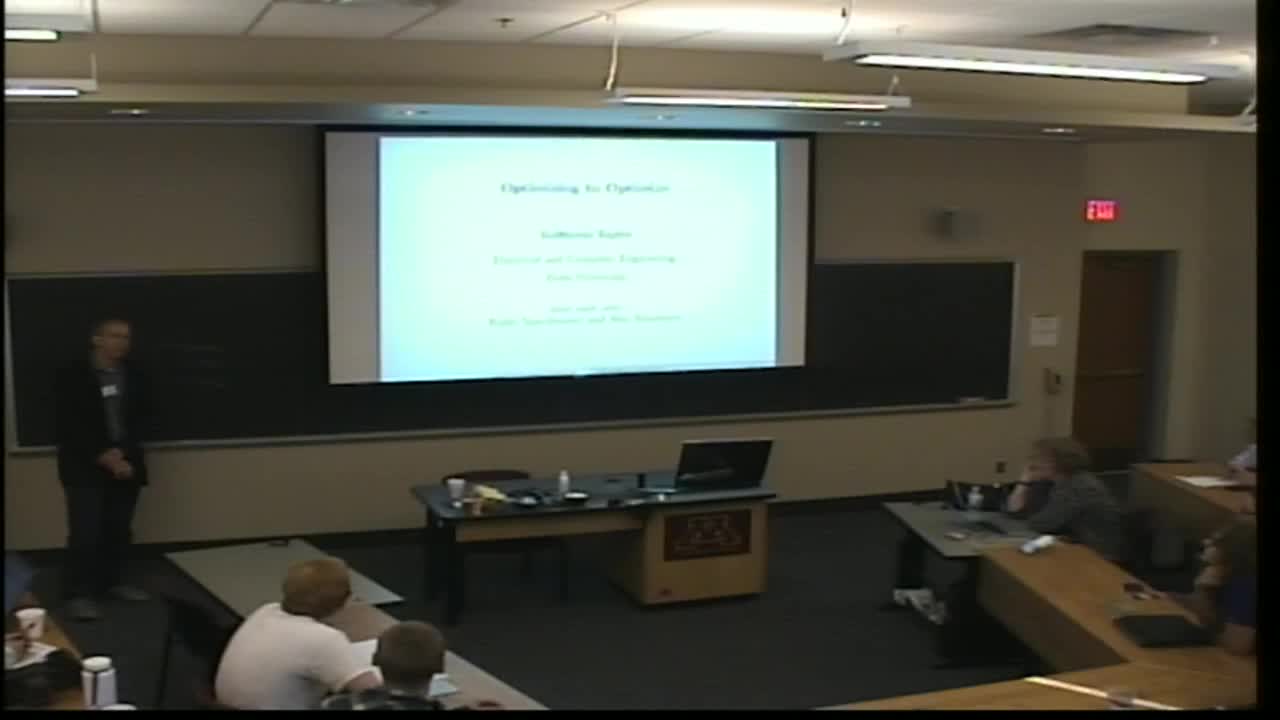Optimizing to Optimize
Presenter
September 23, 2013
Keywords:
- Optimization
MSC:
- 80M50
Abstract
Parsimony, including sparsity and low rank, has been shown to successfully model
data in numerous machine learning and signal processing tasks. Traditionally, such
modeling approaches rely on an iterative algorithm that minimizes an objective
function with parsimony-promoting terms. The inherently sequential structure and
data-dependent complexity and latency of iterative optimization constitute a major
limitation in many applications requiring real-time performance or involving largescale data. Another limitation encountered by these modeling techniques is the
difficulty of their inclusion in discriminative learning scenarios. In this work, we
propose to move the emphasis from the model to the pursuit algorithm, and develop a
process-centric view of parsimonious modeling, in which a learned deterministic
fixed-complexity pursuit process is used in lieu of iterative optimization. We show a
principled way to construct learnable pursuit process architectures for structured
sparse and robust low rank models, derived from the iteration of proximal descent
algorithms. These architectures learn to approximate the exact parsimonious
representation at a fraction of the complexity of the standard optimization methods.
We also show that appropriate training regimes allow to naturally extend
parsimonious models to discriminative settings. State-of-the-art results are
demonstrated on several challenging problems in image and audio processing with
several orders of magnitude speedup compared to the exact optimization algorithms.
Joint work with P. Sprechmann and A. Bronstein.
